How to sharpen scissors at home - this question often arises in everyday life. With frequent use, this tool may require sharpening even once every six months. Although it would seem that you can throw away the old ones and buy new ones, the modern market is flooded with low-quality Chinese products, and high-quality scissors are expensive.
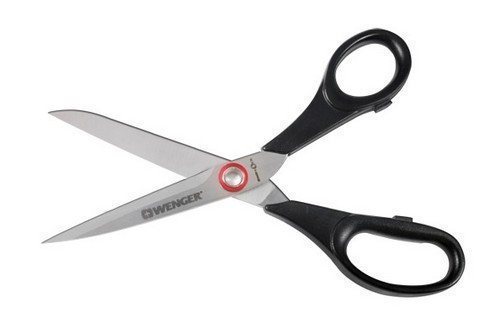
Tools for professional cutting or cutting hair should be sharpened in a special workshop, but sometimes, when the scissors stop cutting, you need to straighten them immediately and there is no time to go to a specialist. You can solve this problem at home in the following ways for a variety of scissors: stationery, tailor's, hair cutting, manicure, gardening and even construction. The simplest reason for the deterioration of the tool’s performance may be the presence of dirt on the blades, for example, after cutting off the tape, in this case it is enough to simply remove the deposit.
Lift
All kinds of scissors, for example, for paper, when they are in order, should cut the fabric, and the cutter's tool should cope with even the thinnest, for example, silk or chiffon, and not only the entire surface, but also the ends. If the blades individually seem sharp, but in fact do not cut the material, but chew it, then the reason may lie in the fact that the fastening of the blades has become loose. When the distance between the cutting surfaces becomes larger, the thin material is not cut, but is clamped. So before you start sharpening, you should try tightening the fastening and then try cutting the fabric again.It may turn out that this is where the problem ends.
The axis of the scissor wings is either a screw screwed into one of the halves, or a bolt with a nut, or a rivet. In the first and second cases, you should use a screwdriver (in the second option, pliers can also help, depending on the shape of the fastener) to tighten the fastening more tightly, having first opened the tool; if this is not done, then after tightening too hard, there is a risk of not being able to open the scissors in general, or the knives will move very slowly. In any case, you need to tighten it carefully and smoothly. It is permissible to turn the screw by a maximum of 0.5 mm, then you should check how the blades close, otherwise you can jam the tool so that it can no longer be repaired.
In the case of scissors with permanent fasteners, the situation is more complicated. The retainer consists of a rivet, a cap, on one side, and a small limiter, a plug made of soldered metal or plastic, on the other side. The instrument should be opened, placed with the head down on an anvil or other strong flat metal object and secured. Then, using a hammer, you need to slightly flatten the latch stop. After checking the cutting ability, repeat the operation if necessary.
If the movement of the scissors turns out to be difficult, they should be lubricated. A thin sewing machine lubricant or any oil is suitable for this purpose. You just need to drop a little on the axle and the blades will move easier.
High-quality sharpening
If tightening does not help and the tool still does not cut well, it needs to be sharpened.The ideal sharpening can be achieved using an electric sharpening machine, which you can not only purchase, but also assemble and master yourself, but you will not need to start with scissors. It can even upgrade the tool used to cut electrical wires to such a state that it will cut the finest matter even with its very tips. Before you start sharpening, it is better to unwind the collapsible scissors, since it is more convenient to sharpen the knives separately, and the working surfaces must be prepared by cleaning them from dirt with a cotton pad with an alcohol-containing liquid. For your safety, you should wear leather gloves for rough work.
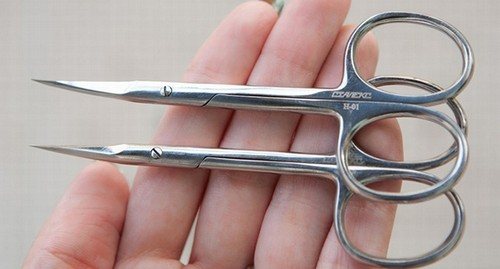
The angle of inclination of the cutting edges of scissors varies depending on their purpose. For most it is 60-75 degrees, and for stationery ones it is about 90 degrees. It is necessary to sharpen the blade, holding it by the ring, evenly along the entire length of the edge, strictly maintaining the appropriate angle. Sharpening the other side, the inner side, like a regular knife, is strictly prohibited, otherwise the gap between the halves will only increase and the tool will stop cutting altogether. Each knife should be moved along the disk slowly towards you, from the axis to the tips, or in the opposite direction, the main thing is not to move back and forth and not to tear the edge from the disk. It is better to sharpen the blades of scissors that do not unwind from the axis, so as not to accidentally damage the second sash.
The procedure must be repeated several times, from time to time removing emerging burrs by lightly running the plane of the cutting edge along the disk. Usually no more than 20 approaches are required.After 30-60 minutes, depending on the effort applied to the knives and the quality of the grinding wheel, you can get a perfectly sharpened tool. Anyone who has not sharpened scissors in this way before will find it difficult at first to determine whether the blade has already sharpened enough. To help you with this, you can paint the inclined cutting edge with a felt-tip pen before sharpening. When traces of paint completely disappear during the sharpening process, it can be considered complete.
Sharpening must be done by a person with a steady hand, capable of firmly fixing the direction. Even the slightest deviation in the angle of inclination will lead to the appearance of irregularities; some areas of the blades will no longer function correctly and because of this, the material will be cut unevenly, wrinkled and torn, or the cutting edges will quickly become dull. If you have old scissors you don't need, practice on them first to get a feel for how to sharpen correctly. Upon completion of sharpening the tool, both halves of the scissors need to be twisted again and checked how they move, cut a piece of material that matches the profile of this tool. If the resulting degree of spiciness is not satisfactory, you will have to repeat all the steps again.
If a special sharpening apparatus is not available, you can imitate it by using a file or a sharpening stone, the same one used to sharpen knives and other cutting tools. The stone usually has one side fine-grained and the other rougher. Severely dull scissors must first be processed on a rough surface to obtain small oblique teeth on the edges, thanks to which their wings will not slide over the material and will cut perfectly. After rough processing, the blades need to be brought down on the fine-grained side.You can also use only a medium-grained stone. The sharpener must first be prepared by covering the currently needed side with a special sharpening oil; if there is none, any oil will do, and in extreme cases, even water. You will need to make the same movements, but you will also have to hold the sharpener in your other hand or somehow secure it to a suitable surface.
You can also use a universal sharpener for knives and scissors. To achieve the goal with this device, 5-7 movements may be enough. But there is only one angle of inclination of the cutting edge. If it does not match that of your tool, effective sharpening will not work. You can also use sandpaper as a sharpening stone.
Features of sharpening manicure, garden, metal and hair scissors
Nail scissors have a different cutting edge than most scissors, they are very small and require delicate work. Tools with straight blades can be sharpened on a sharpening machine with a diamond wheel if you have the proper skill. The speed of the circle must be set to the lowest. Move each blade from the tip to the axis, without applying strong pressure.
An electric tool removes too much metal at a time; without proper experience, there is a risk of completely ruining the nail scissors, so to be on the safe side, you can use needle files instead, small needle files for small jobs. First, a coarse-grained file is used, and then a fine one. You can also sharpen nail scissors on a small, fine-grained abrasive stone.It can be used to sharpen even tools with curved ends! To do this, you will need to give one of the edges of the sharpener a rounded shape with a radius of 0.4-0.5 cm.
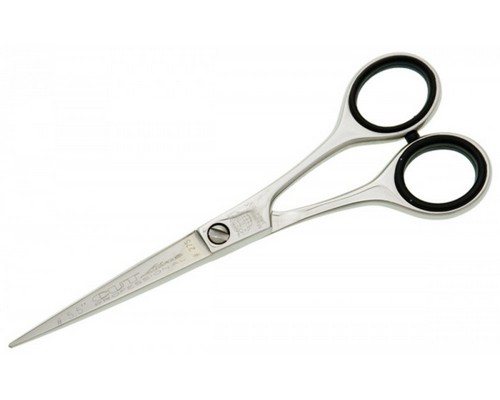
To sharpen large curved branch scissors, you must first unwind them so that you can sharpen the entire length of the blades. To process the lower concave blade, you should use a sharpening wheel with a radius not exceeding 3.5 cm. To sharpen the tool for metal, they should also be unscrewed first, so that during sharpening, notches do not appear on the edges, which will prevent the smooth sliding of the metal along the blades, this is especially true for sheets thicker than 0.3 mm. Before reassembly, it is necessary to lubricate the fastening with lithol or other lubricant.
If scissors used for cutting hair are sharpened on a fine-grained stone, their blades will be very sharp, but the tool will no longer cut. This will happen because the hair is very thin and it will begin to slide along the blades. So, to adjust such tools, you need to take only a coarse-grained stone and not fine-tune it. Make movements from the tips to the axis.
Quick ways
When you need to cut something right away or you don’t even have a file or a whetstone at hand, simple folk methods using improvised means will come to the rescue. These techniques are suitable for minor sharpening, when the tool has not yet become completely dull. But we must not forget that such methods are significantly inferior in quality and duration of the effect, and after 2-3 times of using them, you should still sharpen them conscientiously.
- Cutting sandpaper. This procedure will only take a couple of minutes.150-200 sandpaper is preferable, although it is acceptable to use coarser-grained sandpaper, and fine-grained sandpaper will do in a pinch. Take a sheet of such paper and fold it in half with the rubbing side up so that the abrasive processes the edges of the blades when cutting. The sandpaper also removes burrs and steps from the edges. For a noticeable effect, you should cut about 10-20 strips, using the entire length of the edges. You can also cut abrasive cloth on a fabric basis, steel wool or a kitchen sponge made of steel fibers with the same result.
- Cutting aluminum foil. Take a sheet 20-25 cm long and fold it lengthwise into an accordion or fold it inward to form a thick strip. The more layers, the stronger the sharpening effect per cut. You need to cut the entire length of the edges. The more foil strips are cut, the better the sharpening will be.
- Cutting a glass jar or bottle. If the scissors are small, it is better to use a bottle neck with a uniform width. The container, held with one hand, must be placed in fully open scissors, held by the other, and the rings must be slowly brought together, applying a slight force, as if wanting to cut it, until it is completely pushed out. This action should be repeated until the edges of the scissors become smooth and have the required sharpness. It’s better to take a container that you don’t mind, as scratches may form on it.
- Threading with a sewing pin or large sewing needle. Everything is done the same way as cutting a jar. This method is best suited for small scissors, such as nail scissors.
After any sharpening, you need to wipe the doors with a dampened cloth to remove abrasive fragments.
How to properly use scissors to keep them sharp
If certain rules are followed, the tool may not require sharpening for years. Scissors used for cutting fabric should be used only for this purpose and should not be used to cut, say, fish fins, cardboard or even paper. In sewing, it is not uncommon to have to cut zippers or metal threads. For these operations it is better to have other scissors.
Some scissors require regular disinfection, such as those used for cooking, trimming plants, or trimming nails. For these purposes, you should not boil them, this leads to rapid dulling and rusting; it is better to treat them with an antiseptic, which can be found in a pharmacy, or with another alcohol-containing liquid.
The axes of all scissors should be lubricated every six months to ensure smooth operation and avoid corrosion.


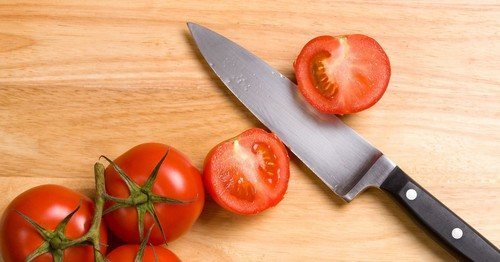
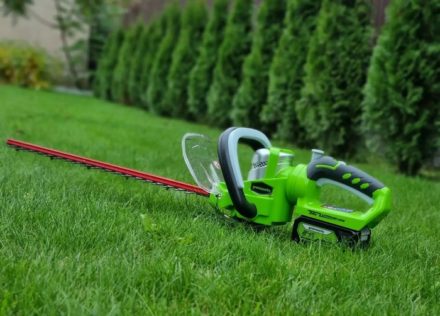
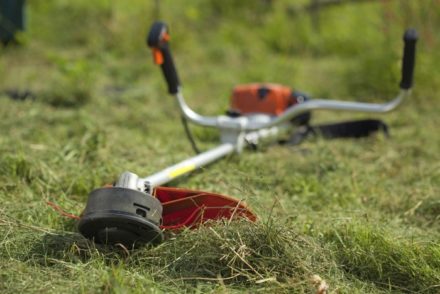
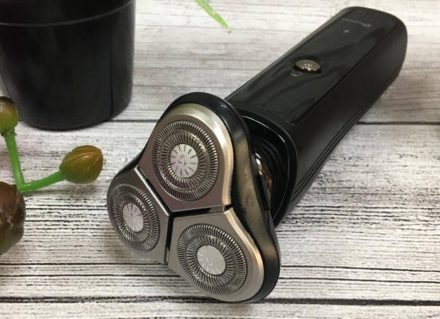
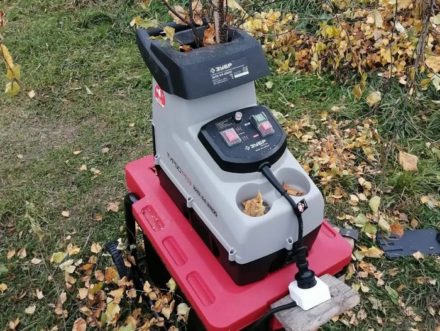
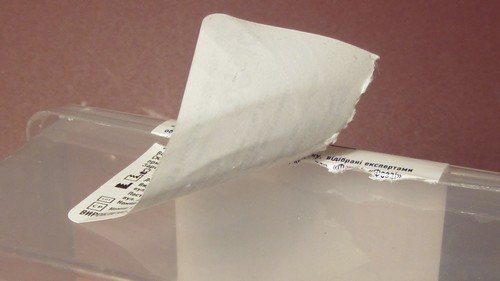
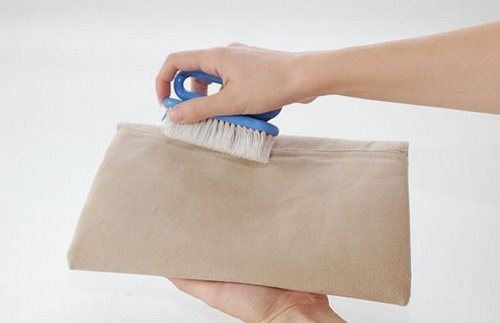
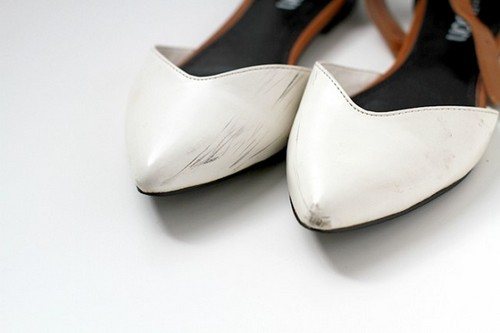
Yes, normal people don’t throw things away
Diamond blocks are just fine